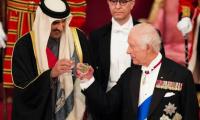What a government can and should do is a difficult question to answer. Even more problematic is the question of how to design the governance structure to make it efficient and effective.
The spread of democracy and the global integration of economies have left little scope for arbitrary behaviour in imposing taxes, framing economic policies, and imposing regulations. Governments are also under pressure from different quarters, including media, NGOs, civil society, and supranational institutions (like IMF, World Bank, and UNDP) to bring in more transparency in their conduct and to develop capacity to perform their assigned objectives
Some scholars contend that government can and should intervene in the economy for political and economic reasons such as raising or reducing prices, promoting economic growth, increasing employment or addressing market failure. Others believe that welfare states have become overburdened, unaffordable, ineffective and constraining, and need to be cut to size to make them more efficient, responsible, and effective.
The most striking change with a formidable challenge to governments around the world is the internet revolution. It has been rightly said that Information Technology changes whatever it touches and it will surely touch everything. The concept of e-government envisages a government delivering cheaper, faster and better services to the citizens. It, however, has its own peculiar problems including data security, confidentiality, and the challenge of dealing with information overload. But this is now a reality and every government has to attend to it by redesigning its structures and reorienting its culture.
Another big change to reckon with is the declining graph of government revenues. Citizens, due to many reasons, seem reluctant to pay enough taxes to enable governments to meet their growing needs. In developing countries, in particular, people generally evade taxes as a result of weak institutions dealing with tax collection and an unsupportive culture that leads to rampant corruption. Consequently, governments are expected to do more with less by streamlining systems.
Globalization has played a pivotal role in forcing governments to ensure winning economic integration with one another. The concept of independence (self-sufficiency symbolized by import-substituted industries) has given way to interdependence. Each country has to find and promote its core competence and make strategic alliances with other countries for goods and services in which it has no or less comparative advantage.
To be able to compete properly in today’s globalized world and achieve sustainable development, governments are being constantly advised by supra-national institutions to move towards liberalization, deregulation, and privatization. Donor organizations such as the World Bank, UNDP, and particularly the International Monetary Fund (IMF) have assumed leadership roles in dictating policy choices of countries like Pakistan.
Like many other countries, Pakistan has been making efforts since its independence in 1947, to revamp its institutions to make them vibrant and effective for meeting the growing public demands of socio-economic development and security. Some of the initiatives have yielded positive results and some have not moved beyond political rhetoric. Pakistani bureaucracy is still characterized by inefficiency, rigidity, lack of responsiveness, and elitism
Historically, numerous factors have pushed governments in Pakistan to initiate reforms and modify its bureaucratic structure. The latest rush to overhaul administrative systems and to rejuvenate public organizations, led by Dr Ishrat Hussain, has been largely prompted by a decline in public finances and the need to get more for less in addition to an effort to combat corruption. The government has had to cut back, to reduce expenditures, and to demand better performance from its sluggish public sectors.
So far, three alternative approaches have been tried to development administration in Pakistan. The first, ‘The 1948 Pay and Service Commission’ led by M Munir, was to continue with the administrative system without substantial change and make a few adjustments to cater for the new government functions. The focus was on streamlining the pay structure of public servants working in different departments. This patchwork was thought to be neither feasible nor desirable given the requirements of dynamic development activities.
Another option to consider was to create completely new machinery for the development function, independent of the existing system of governance. A study on ‘Reorganization of Pakistan Government’ was conducted in 1955 under the supervision of Barnard Galdieux, aimed at reorienting government machinery towards socio-economic development from its traditional role of protecting and promoting the imperial interests of British rulers. It was an excellent and serious effort but its recommendations were never implemented given the fact that the ruling elite had its own vested interests to protect.
Yet another attempt was made by General Musharraf in 2002 by introducing the devolution of power to the grassroots level in addition to restructuring public service. This option did not materialize as it was believed to be unfeasible in the given circumstances. High cost of transformation and intense resistance from bureaucrats are cited as the prime reasons of not going after this reform plan. The old administration system, with some window dressing in the form of local government, is back again in the country with overlapping functions and disjointed structures – not to mention the erosion of values that characterized the traditional public sector including neutrality, probity, and fairness.
The core issue, which is unlikely to be resolved with simple public-sector reforms, is the skewed distribution of power among state organs. The imbalance in institutional power has widened and intensified over time. Pakistan has been under direct or indirect military rule with the connivance of the civil bureaucracy for over half of its 72 years of its history as an independent state. And the civil society, which supposedly keeps a check on the state functioning, has been fragmented and disorganized in Pakistan.
The basic problems surrounding present-day administration in Pakistan arise largely from the fact that an administrative system born as an instrument of colonial policy has been carried over without adjusting it to changed realities. The colonial system was satisfactory as an instrument for assuring public order, swift administration of justice, prompt collection of revenues, and maintenance of accurate land records but was not oriented to the development objectives. What is called for is a greater appreciation of the dynamic character of government and the need for continuous improvement for meeting contemporary challenges.
Reforming the public sector, although very important, has never moved beyond rhetoric. Politicians, promising reforms, only want to be seen as doing something. Announcing reforms, criticizing bureaucracy, praising new initiatives, promising improved services for the future, restructuring ministries and agencies help attract favourable attention from the public.
The PTI government should introduce system-wide reforms (both cultural and structural) for making the public sector more responsive, responsible and efficient without harming its core value of political neutrality. One way of enhancing efficiency and reducing waste will be to make extensive use of information technology besides creating autonomous bodies run by professionals who have knowledge of the local context and thorough understanding of the international best management practices.
The writer teaches at SZABIST, Islamabad.
Email: dr.zeb@szabist-isb.edu.pk
Political instability has long plagued Pakistan, disrupting governance and economic planning
He was prolific writer and always expressed his views with clarity and firmness
In recent weeks, banks have searched for new borrowers, willing to take fresh debt at below-market rates
Pakistan’s constitution guarantees right to peaceful assembly – a cornerstone of democracy
Developing National WASH Account in Pakistan relies on range of stakeholders at federal, provincial, and district levels
Beauty of arbitration is that no conflicted party needs to sit at negotiating table and enter into dialogue with other...







